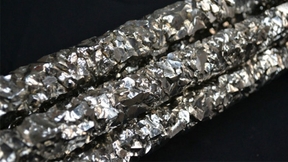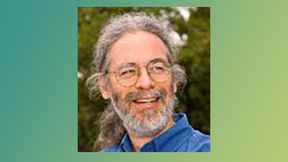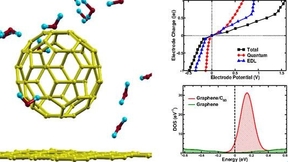Back
Physical and Life Sciences
New biological detection system can provide faster, less expensive results for veterinarians
Veterinarians and agricultural inspectors who seek to detect and contain the spread of animal diseases can now turn to a newer, faster and less expensive biological detection system. Known as the Axiom™ Microbiome Array, or AMA, the new biological detection system is the most comprehensive microorganism detection platform built to date and the first high-throughput…
New multibeam metal 3D printer testbed to understand laser-material interactions
Lawrence Livermore National Laboratory (LLNL) scientists and engineers have created the first research-grade, open-architecture multibeam metal 3D printer and are developing advanced diagnostics to understand the mechanics behind the multibeam process under a project funded by the Air Force Research Laboratory. To address the need for larger builds and faster print times,…
Climate change science marks 40th anniversary of three key events that signified turning point
During the same decade that saw the Beatles breakup, the Watergate scandal, the first Earth Day and the opening of the movie Star Wars, efforts to identify human-caused climate change were in their infancy. Three key events in the 1970s heralded the end of that infancy. The year 2019 marks the 40th anniversary of those three events. Lawrence Livermore National Laboratory …
A universal tool to improve global security
Elusive antineutrinos can help monitor nuclear power plants and other activity The United Kingdom is investing nearly £10 million (about $12.7 million) in a joint project with the United States to harness existing particle physics research techniques to remotely monitor nuclear reactors. Expected to be operational in 2024, the Advanced Instrumentation Testbed (AIT) project…
Death of the dinosaurs: Extreme volcanism played pivotal role in extinction, research shows
Not by meteorite alone did the dinosaurs die off. Lawrence Livermore National Laboratory (LLNL) research scientist Kyle Samperton and colleagues present the most compelling evidence yet that massive volcanic eruptions in the Deccan Traps region of India contributed to the fall of the dinosaurs — also known as the end-Cretaceous mass extinction — approximately 66 million…
Laboratory's nanopore research hits a nerve
Since the discovery of biological ion channels and their role in physiology, scientists have attempted to create man-made structures that mimic their biological counterparts. New research by Lawrence Livermore National Laboratory (LLNL) scientists and collaborators at the University of California, Irvine shows that synthetic solid-state nanopores can have finely tuned…
Sierra snowpack melt is steady, but not for long
Snowpack loss in the northern Sierra Nevada will likely accelerate in the coming decades. Scientists at Lawrence Livermore National Laboratory (LLNL), Oregon State University and the University of Washington found that natural swings in the sea surface temperature over the Pacific Ocean have resulted in atmospheric circulation changes that have muted the effect of climate…
Scientists predict reaction data for fusion research, insight into universe's origins
Using simulations and calculations, Lawrence Livermore National Laboratory (LLNL) nuclear scientists for the first time have accurately predicted the properties of polarized thermonuclear fusion. Analogous calculations could be used to answer some of the most fundamental questions about the origins of the universe and the evolution of stars. For decades, nuclear scientists…
Zirconium isotope a master at neutron capture
The probability that a nucleus will absorb a neutron is important to many areas of nuclear science, including the production of elements in the cosmos, reactor performance, nuclear medicine and defense applications. New research from a team led by Lawrence Livermore National Laboratory (LLNL) scientists reveals that the radioactive isotope zirconium-88 (⁸⁸Zr) is 100,000…
LLNL climate scientist awarded World Climate Research Program 2018 Data Prize
Research scientist Paul Durack from the Program for Climate Model Diagnosis and Intercomparison (PCMDI) at Lawrence Livermore National Laboratory (LLNL) has been awarded the World Climate Research Programme 2018 Data Prize for his leadership of the input4MIPs project, which began in 2016. The prestigious WCRP prize is awarded annually, with Durack selected in late December…
LLNL’s HED Science Center Facilitates Collaborations with Researchers from Japan
LLNL’s High Energy Density (HED) Science Center continues to foster a broad range of collaborative efforts with researchers and students from Japan. For example, the HED Science Center co-organized a workshop regarding U.S.–Japan collaborations in HED science. The two-day event was held in January 2019 at the Japanese Embassy and the Carnegie Endowment for International…
Unlocking the secrets of hidden earthquakes
Growing up in Sonora, a small town in the Sierra Nevada foothills, Lawrence Livermore National Laboratory (LLNL) Physical and Life Sciences (PLS) Directorate researcher Kayla Kroll was fascinated with stars and the solar system. "In high school, I put up glow-in-the-dark constellations in my bedroom," she said, "along with a 3D display of the planets in exact formation. I…
Researchers discover unusual new type of phase transformation in a transition metal
Lawrence Livermore National Laboratory (LLNL) researchers have discovered an unusual new type of phase transformation in the transition metal zirconium. The mechanism underlying this new type of phase transition is the first of its kind that has ever been observed, and only could be seen with the application of very high pressures. The research was recently published by…
Guide star leads to sharper astronomical images
The laser guide star revolutionized astronomy by revealing large swaths of the sky that had previously been unseen from Earth due to atmospheric distortions. Now astronomy is on the verge of another great leap forward. The Extremely Large Telescope, which is expected to see first light in 2024, will have a 39-meter-diameter primary mirror — more than three times the size…
LLNL Collaborates with the University of California and LANL to Study Frontiers in HED Science
The University of California (UC) Office of the President provided more than $4 million to fund a three-year collaborative effort between UC researchers and scientists at two national laboratories—LLNL and Los Alamos National Laboratory. The three-year effort includes establishing the Center for Frontiers in High Energy Density Science (CfHEDS) to study the fundamentals of…
Seminar Series Connects HED Science Experts
LLNL’s High Energy Density (HED) Science Center hosted 31 speakers during 2018 as part of the Center’s Seminar Series. The ongoing program invites HED science researchers from around the world to discuss their work, helping LLNL scientists expand their awareness of HED science research at other institutions, and connecting experts from other institutions with LLNL…
LLNL’s HED Science Center Collaborates with APS Bridge Program
On December 11, 2018, LLNL hosted a visit from Ted Hodapp, senior advisor to the U.S. Department of Education for the American Physical Society (APS) and leader of the APS Bridge Program, which aims to increase the number of individuals from underrepresented groups who hold physics degrees. As HED science is one of LLNL’s core missions and an essential research area for…
Livermore Leaps into Quantum Computing
As high-performance computing (HPC) systems evolve, the rate of progress is slowed by the physical limitations and power demands of conventional microchips. To overcome these obstacles, HPC experts currently pursue advances in parallel processing to increase overall performance and reduce energy consumption.
Probing silver nanocrystal superlattices
Typically, superlattices—faceted crystals composed of nanocrystal building blocks—have been made using slow evaporative techniques that often take days to weeks to form highly crystalline solids. This process is difficult to control, which has made it hard to systematically tune film properties and has hindered quantitative study of the assembly process. To overcome these…
Next-generation graphene supercapacitors
Understanding and controlling the electrical response at a complex electrode–electrolyte interface is key to the development of next-generation supercapacitors and other electrochemical devices. While it is largely acknowledged that the capacitive performance of these devices is governed by both the quantum capacitance of the electrode and the electric double layer…

























